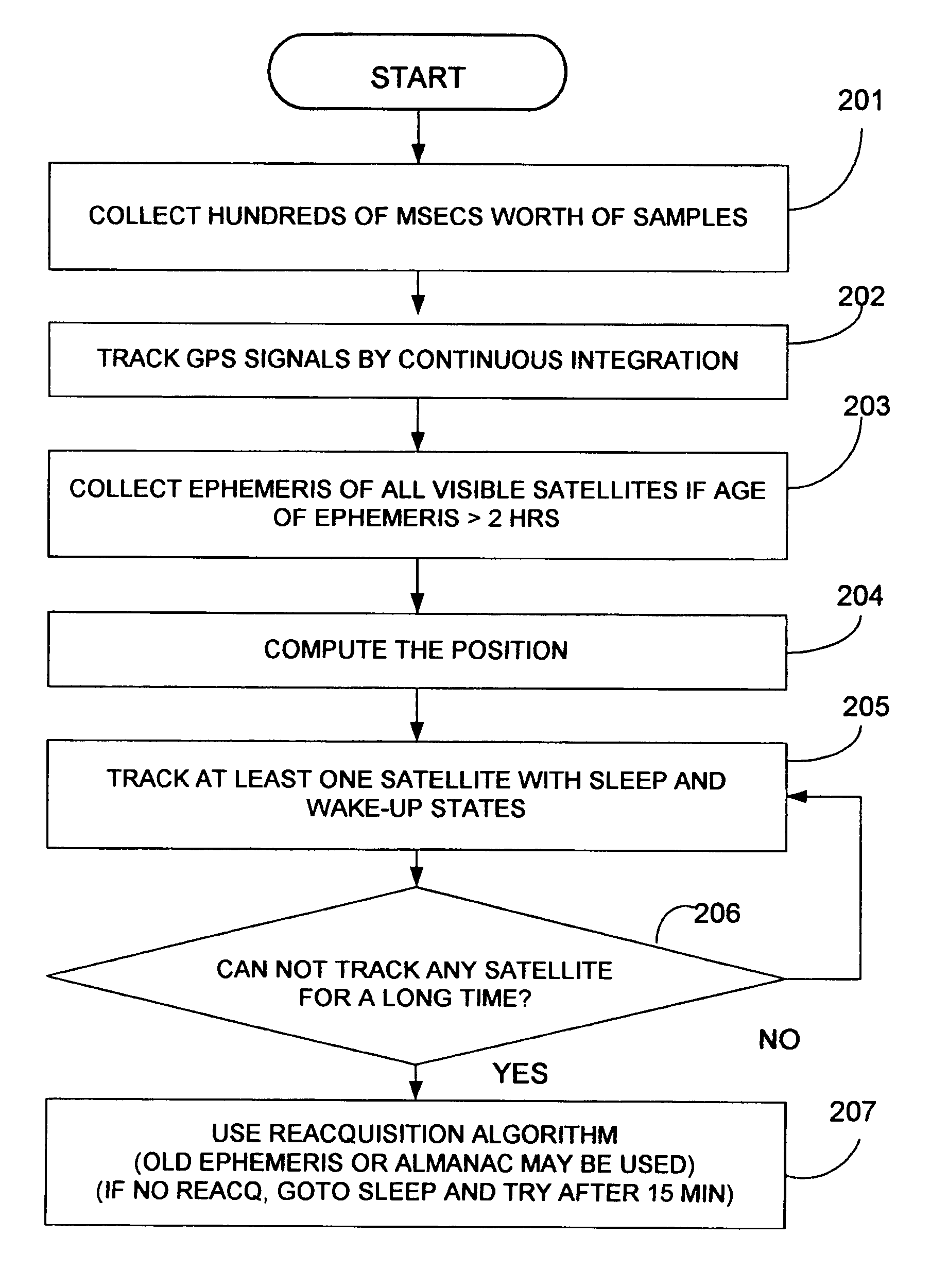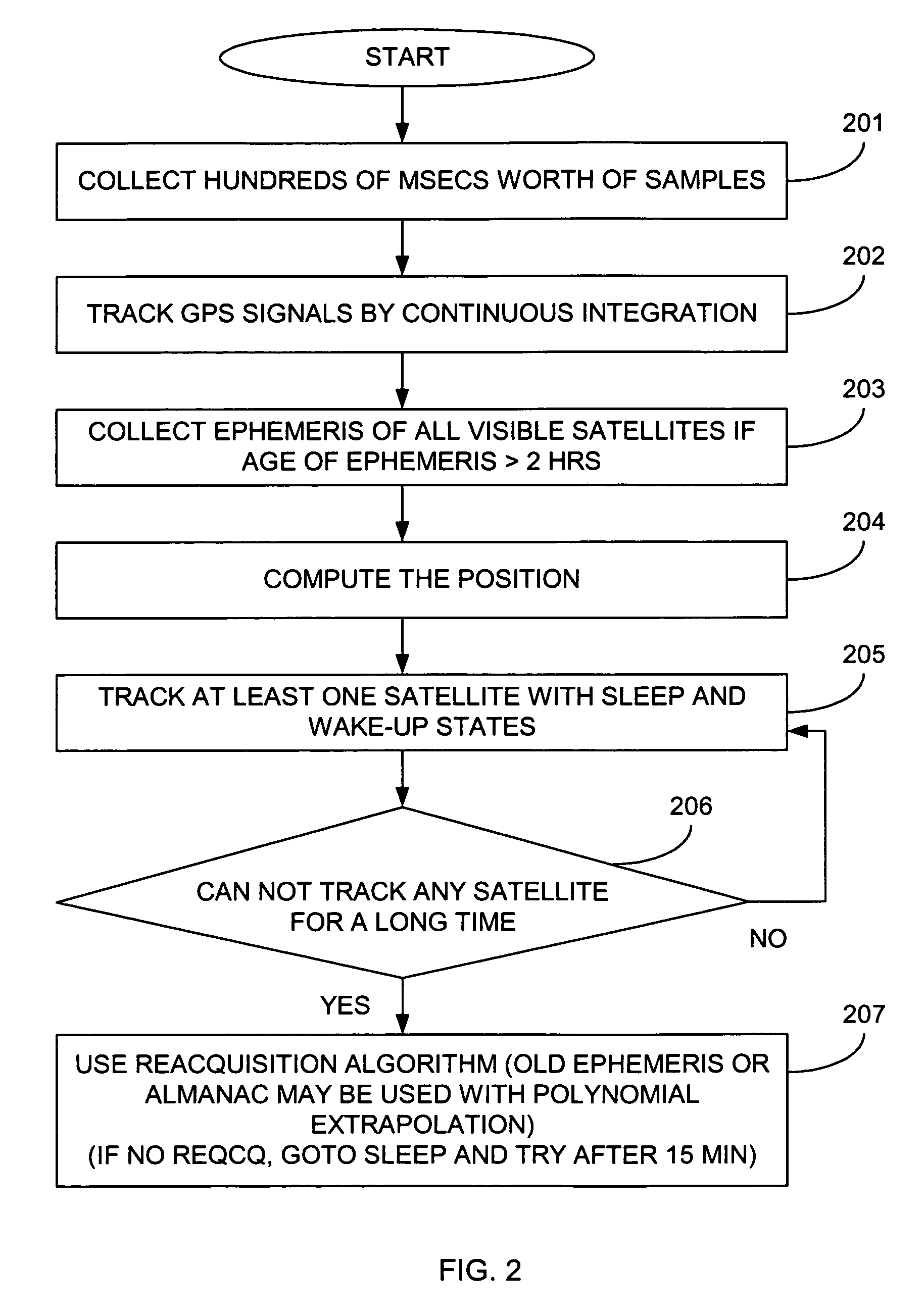Unassisted indoor GPS receiver
a receiver and indoor technology, applied in the field of satellite based navigational receivers, can solve the problems of reducing the search frequency band, reducing the possible gain, and requiring additional infrastructure, and achieve the effect of reducing the time of fft computation
- Summary
- Abstract
- Description
- Claims
- Application Information
AI Technical Summary
Benefits of technology
Problems solved by technology
Method used
Image
Examples
Embodiment Construction
[0024]FIG. 1 is a functional block diagram of a GPS receiver according to an embodiment of the present invention. An RF front-end 100 processes the RF signal received at the antenna (not shown). Operations of a conversional RF front-end 100 include amplification, down-conversion, and analog-to digital conversion. The RF front end 100 outputs an intermediate frequency (IF) signal 101 to a baseband section of the receiver from its analog-to-digital converter (ADC) output (not shown). The RF front-end 100 down converts the received RF into the intermediate frequency (IF) for baseband processing. The IF signal 101 is made available to two paths, one in-phase (I) and the other in-quadrature (Q). In the I path, the IF signal 101 is multiplied in IF mixer 102 in-phase with a local frequency signal generated by a direct digital frequency synthesizer (DDFS) 106 to produce the in-phase (I) component 107. In the Q path, the same signal 101 is multiplied by the DDFS frequency in-quadrature (i.e...
PUM
 Login to View More
Login to View More Abstract
Description
Claims
Application Information
 Login to View More
Login to View More - R&D
- Intellectual Property
- Life Sciences
- Materials
- Tech Scout
- Unparalleled Data Quality
- Higher Quality Content
- 60% Fewer Hallucinations
Browse by: Latest US Patents, China's latest patents, Technical Efficacy Thesaurus, Application Domain, Technology Topic, Popular Technical Reports.
© 2025 PatSnap. All rights reserved.Legal|Privacy policy|Modern Slavery Act Transparency Statement|Sitemap|About US| Contact US: help@patsnap.com



